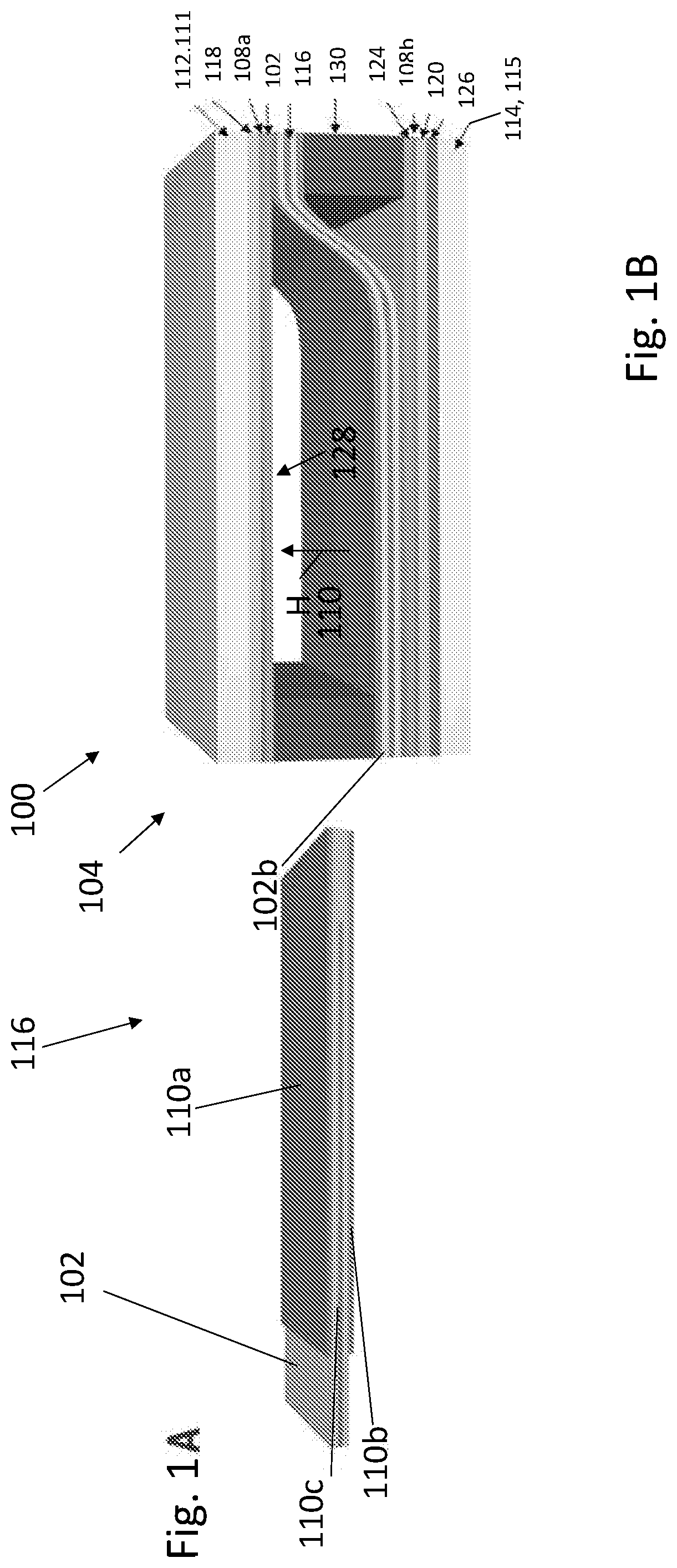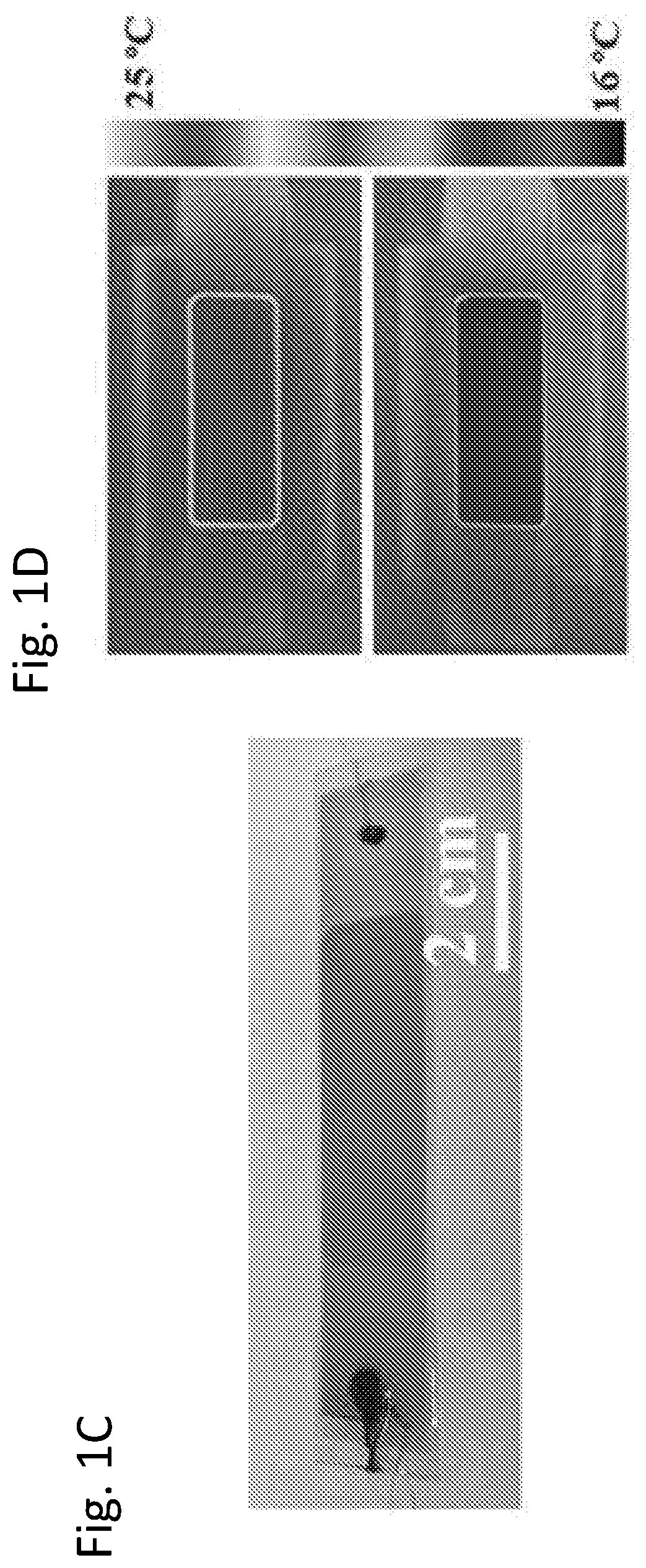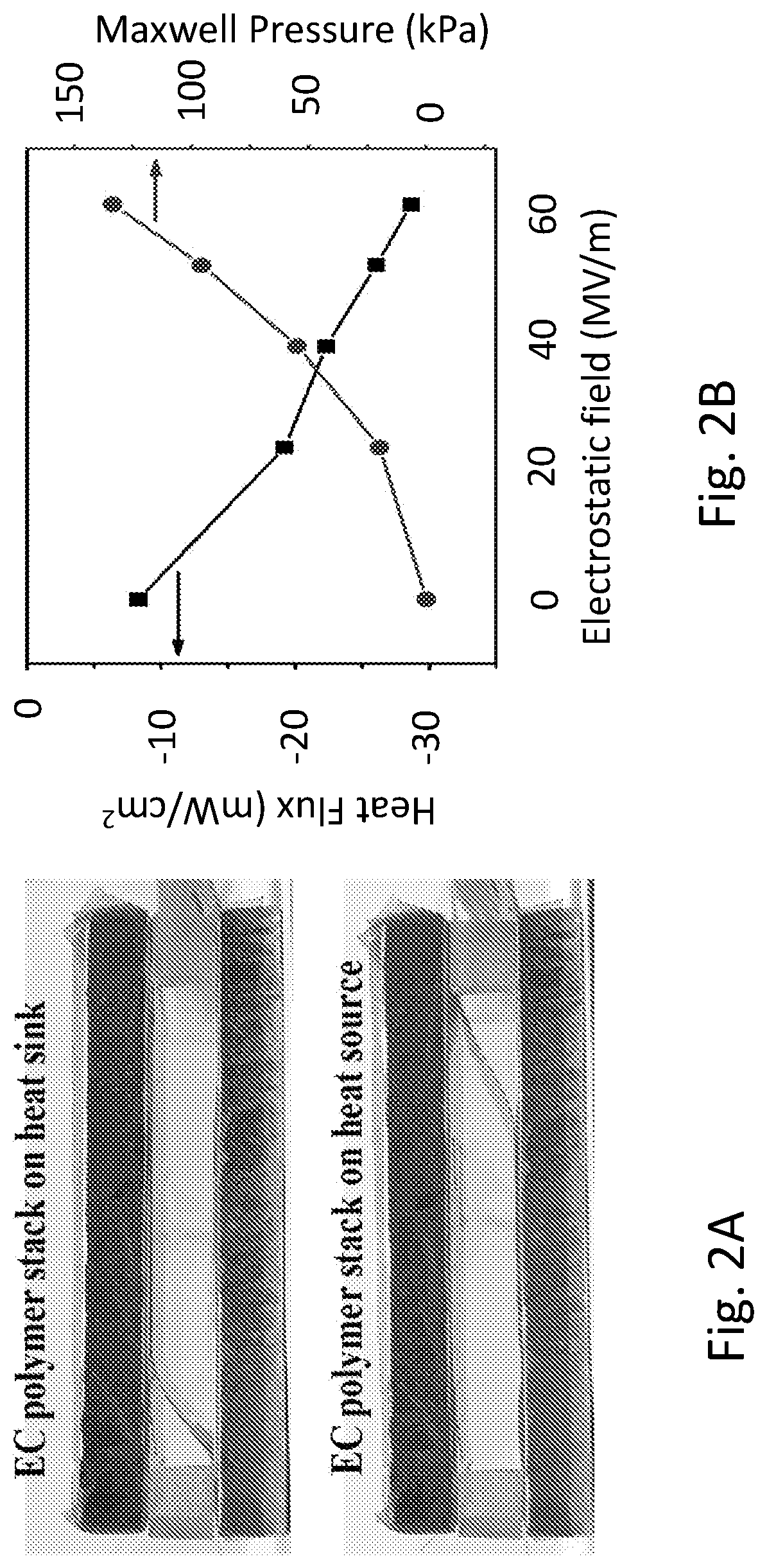Electrocaloric cooling with electrostatic actuation
a technology of electrostatic actuation and electrostatic cooling, which is applied in the direction of electrochemical generators, lighting and heating apparatus, and machine operation modes, etc., can solve the problems of difficult scaling down to meet the cooling demands of modern technologies, bulky, and complex vapor compression systems, etc., and achieve controllable increase (or decrease) of thermal contact and heat flux
- Summary
- Abstract
- Description
- Claims
- Application Information
AI Technical Summary
Benefits of technology
Problems solved by technology
Method used
Image
Examples
first embodiment
[0059]The present disclosure describes an EC refrigeration device architecture where electrostatic actuation is employed to (e.g., rapidly) transport a flexible EC polymer film or stack between a heat source and a heat sink. The electrostatic force not only moves the EC material but promotes the formation of (e.g., intimate) thermal contact between the EC polymer film or stack and the heat source / sink during each cycle.
first example
1. First Example
[0060]a. Architecture and Fabrication
[0061]FIGS. 1A-1D illustrate the architecture of an EC cooling device 100 according to one example, comprising one or more heat transporting elements 102 and an actuation mechanism 104 attached to, coupled to, or on the heat transporting element(s). The heat transporting element(s) 102 each comprise a layer 102b of electrocaloric material or polymer and the actuation mechanism includes a first electrode layer 108a, and a second electrode layer 108b, and one or more flexible electrode layers 110. The first electrode layer 108a is attached to a heat sink 111 or through a plate 112 to the heat sink 111, the second electrode layer 108b is attached to a heat source 115 or through plate 114 to the heat sink 115, and the one or more flexible electrode layers 110 are attached to the one or more heat transporting elements (102).
[0062]In one or more examples, the heat transporting elements 102 and flexible electrode layers 108c are disposed...
second example
2. Second Example
[0117]FIG. 11 illustrates an alternative to S-shaped actuation comprising a device 1100 wherein curved surfaces 1102a, 1102b ensure good thermal contact when a flexible electrocaloric polymer layer 1104 is electrostatically attracted to the surface 1102a, 1102b and oscillates 1106 back and forth between the curved surfaces 1102a, 1102b. In this example, the device 1100 includes an electrocaloric polymer 1104 (including a single layer o stack) attached to flexible electrodes 1108, a source 1110 of cold or heat (cold source or heat source) having a curved surface 1112, a heat sink 1114 having a curved surface 1116, a first electrode 1118 on the curved surface 1112 of the cold source, a second electrode 1120 on the curved surface 1116 of heat sink 1114, a first insulator 1122 on the first electrode 1118, and a second insulator 1124 on the second electrode 1120. The heat transporting element 1150 may comprise the EC polymer 1104 alone or the EC polymer 1104 combined wit...
PUM
 Login to View More
Login to View More Abstract
Description
Claims
Application Information
 Login to View More
Login to View More - R&D
- Intellectual Property
- Life Sciences
- Materials
- Tech Scout
- Unparalleled Data Quality
- Higher Quality Content
- 60% Fewer Hallucinations
Browse by: Latest US Patents, China's latest patents, Technical Efficacy Thesaurus, Application Domain, Technology Topic, Popular Technical Reports.
© 2025 PatSnap. All rights reserved.Legal|Privacy policy|Modern Slavery Act Transparency Statement|Sitemap|About US| Contact US: help@patsnap.com



